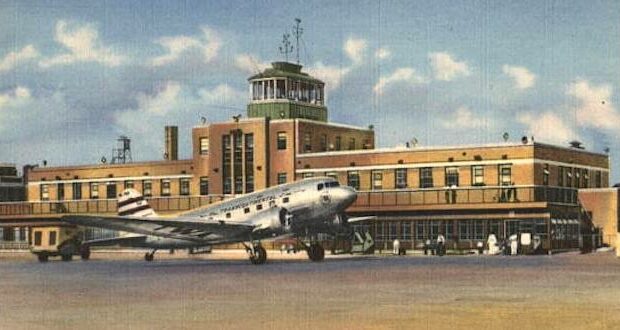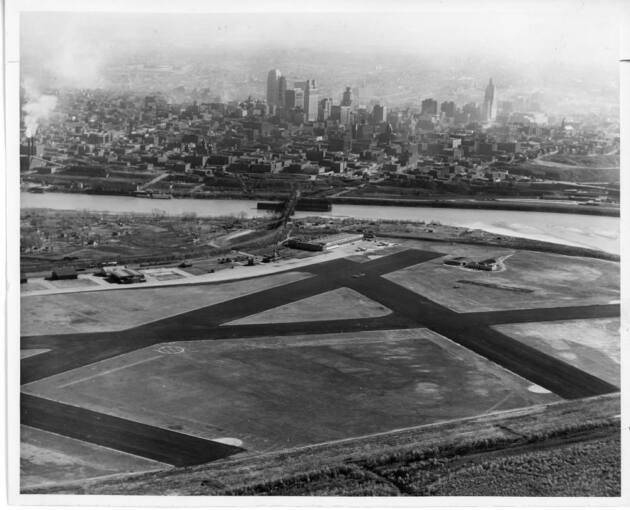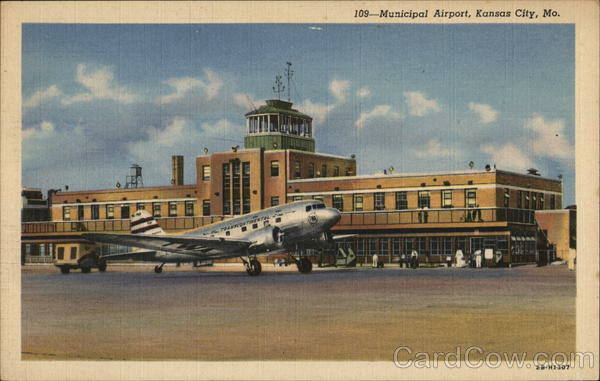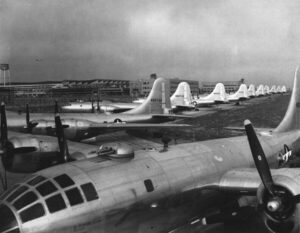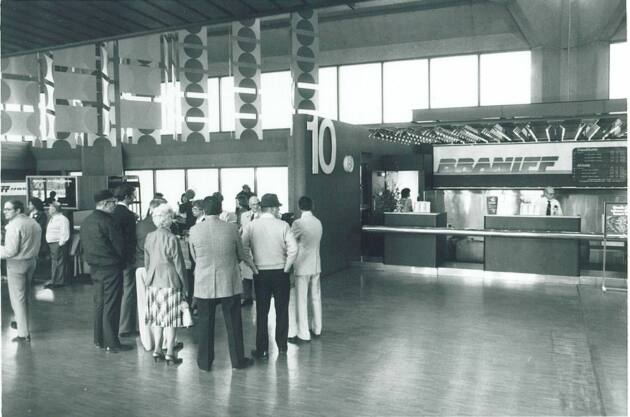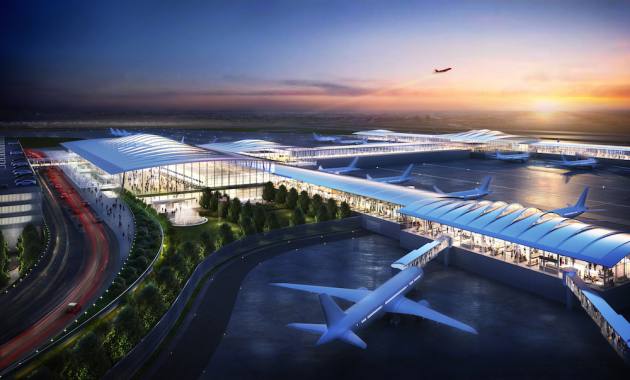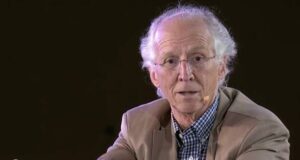When we think of air travel today, we think of the airports around the country, and we think of the number of flights that go through Chicago or Atlanta. We think about Boeing producing the jets we know today in Seattle or Charlotte, of Airbus in Europe, in London and Paris, but without “Flyover Country” much of what we know about air travel would be missing.
From the traveling flying circuses of Kansas during the 1920s and 30s, to the great fliers that came from the Midwest like Amelia Earhart and Charles Lindbergh, our region has been central to air travel. Much of that history can be seen in the TWA Museum at the Charles B. Wheeler airport, previously known as the Kansas City Municipal Airport.
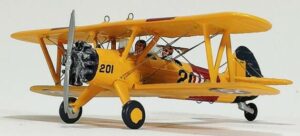 In the early years of air travel, especially with mail contracts, the aircraft had limited range. They landed for fuel, as well as to avoid bad weather. The Boeing Stearman biplane of the 1930s had a range of 505 miles, not enough to get it from Chicago to Denver, so cities like Kansas City were hubs for airplanes needing to refuel. Even the Ford Trimotor, one of the first passenger aircraft, was limited to 575 miles, hardly enough to get it from New York to California, non-stop. Even today, most of the piston-powered private aircraft are still limited to ranges of about 1000 miles, requiring stops for refueling, and it is why the airports of the Midwest are fueling stops for races like the Powderpuff Derby, won by fliers from the Midwest.
In the early years of air travel, especially with mail contracts, the aircraft had limited range. They landed for fuel, as well as to avoid bad weather. The Boeing Stearman biplane of the 1930s had a range of 505 miles, not enough to get it from Chicago to Denver, so cities like Kansas City were hubs for airplanes needing to refuel. Even the Ford Trimotor, one of the first passenger aircraft, was limited to 575 miles, hardly enough to get it from New York to California, non-stop. Even today, most of the piston-powered private aircraft are still limited to ranges of about 1000 miles, requiring stops for refueling, and it is why the airports of the Midwest are fueling stops for races like the Powderpuff Derby, won by fliers from the Midwest.
READ: The real climate Crisis – the Midwest in the 1930s
Missouri native six-star General John J. Pershing brought airplanes to the military, chasing Pancho Villa in Mexico. Later, he oversaw all US forces in the Great War, otherwise known as World War One, including the fledgling Army Air Corps.
Charles Lindbergh’s aircraft, the first aircraft to fly the Atlantic non-stop, was paid for by businessmen from St Louis and that is why the aircraft was named the Spirit of St Louis. Emilia Earhart one of the first female pilots who made history by flying the Atlantic and setting speed records, was a native of Atchison. During World War II, Stearman from Wichita and the St Louis Aircraft Companies competed to build trainers for the US Army Air Corps.
In Kansas City, there were two main airports, divided by the Missouri River. Kansas City Municipal Airport was dedicated on August 17, 1927, by Charles Lindburgh. It served as the main Kansas City airport, being close to the downtown area. In the early days, it was also the headquarters for TWA, Transcontinental and Western Airlines. However, it was not the first airport. On the other side of the Missouri River was Fairfax Field, an airport that began operating in 1921. In the 1930s, due to industrial expansion, it became the military transport hub, and for a time during and after World War II it served as a reserve Air Force base. Adjacent to Fairfax was the NAA plant where from 1940 through 1945, 6,608 of the total 9,889 B25s manufactured for the war were produced.
Boeing at its Wichita plant developed and produced 1,644 B-29s, beginning in 1944. This aircraft was so developed, with pressurized cabins, electronic machine guns, high altitude operation, payloads, range, and speed, that more money was spent developing the B-29 than was spent in the entirety of the Manhattan Project that developed the bomb that ended the war, being dropped by B-29s. Boeing lost many of its best test pilots in what became known as the “Battle of Kansas”.
There were other airports in the area including Mid Continent Airport built in 1951 and Grandview Airport, which was leased to the US Army in 1944 to become Richards Gebaur Air Force Base. The New Century Airport near Gardener, Kansas used to be the Olathe Naval Air Station, a joint operation between civilian and military operations, and there are several smaller local airports.
Served by many airlines
The Midwest has been served by a wide variety of airlines. Following World War II, Kansas City served as the headquarters for TWA and Braniff. Trans World Airlines (TWA), owned by Howard Hughes, was responsible for breaking Pan American’s grip on international travel with its long-range Lockheed Constellations, and Braniff was responsible for opening some of the first airline routes to South America. Mid-Continent, another Kansas City hometown airline, was merged with Braniff in 1952, following the flood in Kansas City that devastated both Kansa City and Fairfax airports. After the flood, TWA moved its overhaul base from Fairfax to Mid-Continent Airport, the airport that later became Kansas City International. The International Air Transportation Association still uses the old designator code MCI for Kansas City’s primary airport.
In 1966 Howard Hughes lost control of TWA, making it a public airline. In 1970, the TWA Overhaul Base at what was then Mid-Continent Airport was one of Kansas City’s largest employers with nearly 6,000 workers. TWA had Stewardess training in Shawnee Mission, Kan. In 1972, Kansas City moved its air traffic to KCI and in 2001, TWA disappeared with a failed attempt to buy it from majority shareholder, Carl Icahn. At that point, American Airlines took over the overhaul shop at KCI.
Kansas City has seen the likes of Eastern Airlines which is now part of Delta, Continental Airlines operating with United; Frontier Airlines, Southwest Airlines, Northwest Orient which is part of Delta; Alaska Airlines, Ozark Airlines, American Airlines, Pan Am Airlines which is part of Delta, US Airlines, Spirit and others. The Airline industry has changed dramatically, with the larger airlines consolidating, and contracting with some of the smaller carriers like Sky West contracted for shorter smaller flights. The Boeing 747s are gone except in cargo aircraft, replaced by twin-engined aircraft of Boeing and Air Bus, while smaller airlines use aircraft manufactured by Lear, Cessna, Beechcraft, and Bombardier, many of which are headquartered in Wichita.
The history of KCI and kitchen plates
Kansas City International, designed to be one of the most passenger-friendly airports, boasted the shortest distance from curb to plane, employing systems of seamlessly moving people through its three circular terminals. It was also known for advanced fuel delivery for aircraft, and other amenities making it an architectural wonder.
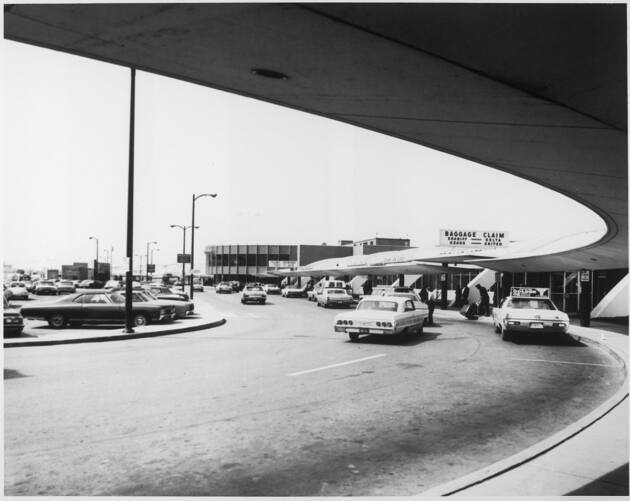
When its new airport opened, KCI featured unique “curb to gate” access which became untenable after 9/11.
The original architect used kitchen plates to demonstrate his design. The sole drawback in the 20th Century was its distance and transportation to and from Kansas City and the spread-out commercial districts and towns around it. When it was built, its runways (free from flooding) represented a giant step forward from Kansas City Municipal and Fairfax Airports, and the fact that the runways could be expanded to their present two-mile length was a big plus over airports surrounded by dikes and levees.
However, after 9/11, the demands of security required change. Kansas City International was one of the few airports in the US originally not using the TSA for security, as the demands of multi-gated terminals required more manpower that could be offered through the TSA. Further, much of the infrastructure was aging, whether it was inter-terminal buses, the general upkeep, and maintenance. So, Kansas City devised a plan to upgrade based on airline funding, not tax increases.
With the newly redesigned and built KCI is scheduled to open March 3, 2023, local buzz will rightly turn to the history of flight and the important role Kansas City and the Midwest have played.
The history of air travel is part of the future, as well as the past in the Midwest, from the B2 aircraft housed at Whiteman Air Force Base in Knob Noster, Mo., the helicopters at Marshall Field in Fort Riley, the aircraft manufacturing in Wichita and St Louis, to the airports large and small that serve everyone in the country. From the men and women that work in the industry to the crop dusters that spray our fields, air travel is a large part of our lives, and we are an integral part of its future.
–Bob White is a Kansas City-area resident and history writer for Metro Voice. Read his other stories below. Search his name for more. Read his other stories HERE.
 Metro Voice News Celebrating Faith, Family & Community
Metro Voice News Celebrating Faith, Family & Community 
